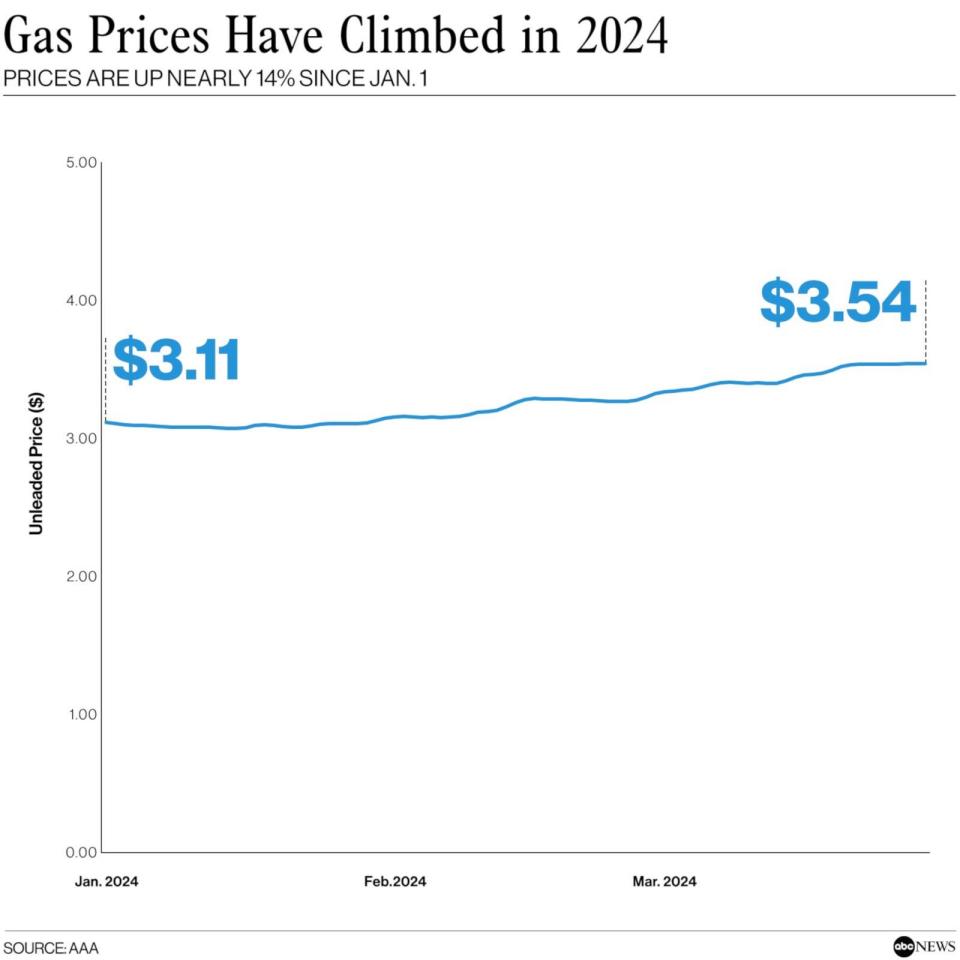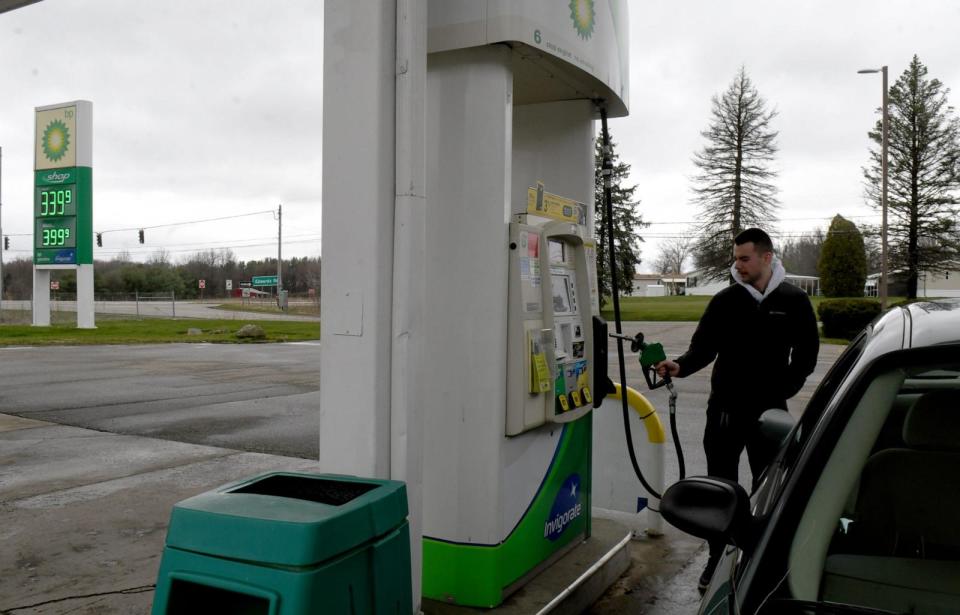Gas prices have climbed nearly 14% this year. Here's why.
Gas prices have surged higher at the outset of 2024, stressing household budgets and complicating efforts to cool inflation.
Since the beginning of the year, the average national price for a gallon of unleaded regular gas has jumped nearly 14%, amounting to an increase of more than 40 cents per gallon, according to AAA data shared with ABC News.
In some states, prices have climbed dramatically over the past month. In Utah, the average price of a gallon of gas has increased by 60 cents, while prices over that same period have jumped 55 cents in Alaska and 43 cents in Oregon, AAA data showed.
Drivers may be distressed by the eye-popping price hikes but they roughly match the typical bounce in spring, when warm-weather travelers drive up demand and refineries switch to a more expensive blend of summer fuel, analysts told ABC News.

“Prices are doing what they always do: rise in the spring,” Andrew Gross, a spokesperson at AAA, told ABC News.
“Spring break travel is here,” Patrick de Haan, the head of petroleum analysis at GasBuddy, told ABC News. “This is the time of year Americans start using more gasoline.”
Alongside that uptick in demand, refineries have begun shifting to a more expensive, less-polluting blend of summer fuel. The summer blend accounts for changing weather conditions in an effort to mitigate environmental impacts, de Haan said.
MORE: The stock market has skyrocketed to start 2024. Will it continue?
Over the past six years, excluding a pandemic-related anomaly in 2020, gas prices in the U.S. have risen an average of nearly 50 cents between Jan. 1 and late March, de Haan said.
“We’re basically right on par with what we tend to see,” de Haan said.
Gross, of AAA, differed slightly, saying gas prices are seven cents higher than they were at this same point last year. However, Gross said he expects the gap between this year and last year to close within the next two weeks as price increases moderate.

The added cost, however, arrives at an inopportune time for U.S. consumers. Inflation ticked up in February, Bureau of Labor Statistics (BLS) data showed, offering the latest sign that the path toward lower inflation has struck a rough patch.
Energy and housing costs accounted for more than 60% of the overall price increases last month, the BLS said.
Price increases have cooled dramatically from an inflationary peak of about 9%, but inflation still stands more than a percentage point higher than the Federal Reserve's target rate of 2%.
Additionally, a range of factors could exacerbate gasoline price increases in the coming months, analysts said. Crude oil, the key component in gasoline, accounts for more than half of the price, and oil prices have climbed so far this year, owing to supply limitations and geopolitical unrest, de Haan said.
The U.S. West Texas Intermediate futures price has jumped 16% since Jan. 1, reaching $83 a barrel on Friday.
MORE: Trump's Truth Social stock is soaring as the company loses money. Here's why.
The Atlantic hurricane season from June to November also risks damage to major refineries in Louisiana and Texas, de Haan said. “There can be disruptions,” he added.
Looking ahead, de Haan said gas prices will rise further as the summer nears but he doesn't expect the peak national average to exceed $4 a gallon.
Fortunately, the spike in consumption over recent months will reverse itself in the fall as temperatures drop, bringing supply and demand into better balance, de Haan said.
“By the end of the year, lower gas prices will return,” he said.
Gas prices have climbed nearly 14% this year. Here's why. originally appeared on abcnews.go.com

 Yahoo Finance
Yahoo Finance 